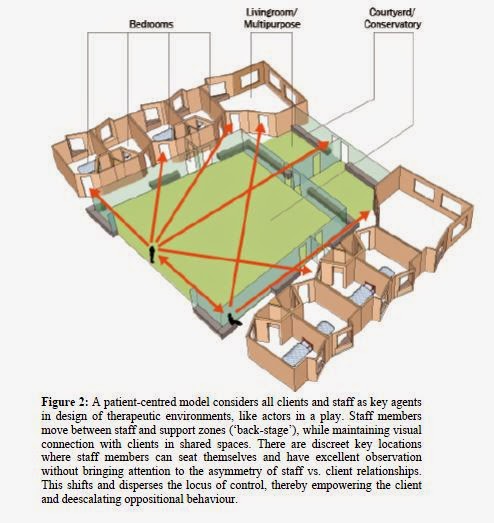- Ackerman (2004)
[Ackerman, D. An Alchemy of Mind. The Marvel and Mystery of the Brain. New York: Sribner: 2004]
Using Thorncrown Chapel as an example, John Eberhard explains how good design impacts our mind. As a result of it's construction (elaborate trusses within a largely glass structure, surrounded by trees), light, shadow and reflections play a major role in the ambience or atmosphere of the Chapel.
These shadows and reflections are constantly changing during the day and night. Eberhard explains the cognitive and emotional experiences associated with the chapel in neurological terms:
- our sense of awe is influenced partly by having space above our head that is not visible until we move our eyes upwards; perhaps raising our eyes upwards provokes some primal notion of something ethereal
- the sensitivity of our suprachiasmatic nuclei (SCN) to light (which influences our circadian rhythms) influences our alertness. Moving light and shadow may trigger the SCN to 'play with alertness' in a way that we find stimulating NB. The SCN is a tiny region located in the hypothalamus, situated directly above the optic chiasm. It is responsible for controlling circadian rhythms.
- the quiet setting in the woods is soothing - perhaps more so in urban dwellers than rural...
Eberhard discusses the hypothesis that our brain is hard wired to respond to proportions based on the golden section, or golden mean.
Eberhard, John. Brain Landscape: the Coexistence of Neuroscience and Architecture. New York: Oxford University Press, 2009.
Eberhard, John. 'Applying Neuroscience to Architecture.' Neuron 62, Issue 6, (25 June 2009): 753-756.





















